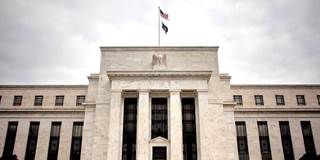More than two years after economists divided into opposing camps over the nature of the post-pandemic inflation, we now know which side was right. Disinflation has confirmed that the earlier price increases were “transitory,” driven largely by supply disruptions and sectoral shifts in demand.
PISA – As the world was recovering from the pandemic, inflation shot up, owing to widespread disruptions to global supply chains and sudden changes in patterns of demand. While the demand shifts might have posed a challenge to price stability even in the best of times, the breakdown in supply chains made matters worse. The market could not respond immediately to the new demand patterns, so prices increased.
Recall that we initially experienced a car shortage, simply because there was a shortage of computer chips – a problem that took 18 months to correct. The issue was not that we had forgotten how to produce cars, or lacked trained workers and factories. We were just missing a key component. Once it was supplied, automobile inventories expanded, and prices came down – disinflation set in. (Disinflation is a decline in the rate of inflation, not necessarily of the actual price level, and is what matters for central banks monitoring changes in prices. In this and several other cases, prices actually came down.)
Housing provides another example of this temporary, self-correcting phenomenon. Since population size is a major determinant of demand, the loss of one million Americans under Donald Trump’s pandemic mismanagement ought to have lowered housing prices at the aggregate level. But the pandemic also induced people to look for greener pastures. Major cities like New York came to seem less attractive than places like Southampton and the Hudson Valley.

PISA – As the world was recovering from the pandemic, inflation shot up, owing to widespread disruptions to global supply chains and sudden changes in patterns of demand. While the demand shifts might have posed a challenge to price stability even in the best of times, the breakdown in supply chains made matters worse. The market could not respond immediately to the new demand patterns, so prices increased.
Recall that we initially experienced a car shortage, simply because there was a shortage of computer chips – a problem that took 18 months to correct. The issue was not that we had forgotten how to produce cars, or lacked trained workers and factories. We were just missing a key component. Once it was supplied, automobile inventories expanded, and prices came down – disinflation set in. (Disinflation is a decline in the rate of inflation, not necessarily of the actual price level, and is what matters for central banks monitoring changes in prices. In this and several other cases, prices actually came down.)
Housing provides another example of this temporary, self-correcting phenomenon. Since population size is a major determinant of demand, the loss of one million Americans under Donald Trump’s pandemic mismanagement ought to have lowered housing prices at the aggregate level. But the pandemic also induced people to look for greener pastures. Major cities like New York came to seem less attractive than places like Southampton and the Hudson Valley.